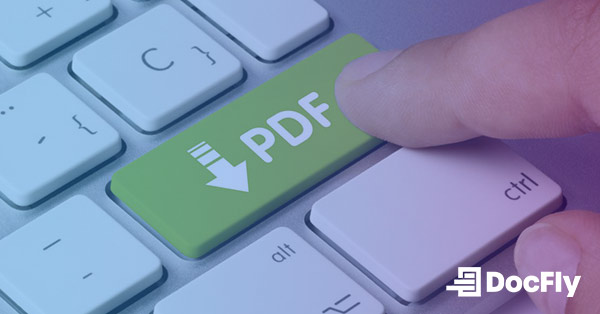PDF in Real Estate: Taking Digital Transformation to The Next Level
As one of the world’s oldest industries, real estate has traditionally been a paper-intensive business. This is especially the case as trust is very important. All parties, such as buyers, sellers, and service providers, need to verify that information is accurate before transacting.
Historically, every stage in the lifecycle of a real estate transaction (such as listings, offers, and contracts) has relied on physical documents. Thanks to dramatic improvements in digital tools, the industry is now turning to solutions such as PDFs to automate processes and enhance efficiency. This article will discuss a range of benefits that make PDFs very useful for the real estate industry. As will be shown, the file format is revolutionizing real estate.
Table of Contents
What are PDFs and why are they useful in real estate?
PDF stands for Portable Document Format, and was invented by Adobe co-founder John Warnock in 1991. At the time, there was no common file format that could be viewed across various devices running different operating systems. Thanks to the PDF one can capture electronic documents from any application, share electronic versions of those documents, and view and print them from any device. Importantly a PDF always maintains its formatting, ensuring it always looks the same when viewed or printed from any device.
In real estate, PDFs are advantageous because they are a more secure format relative to paper or other file formats. As explained in a previous blog post, there are many ways to secure a PDF. For example, PDFs can be password-protected, limiting access and other functions (such as editing) to those who have the correct password.
As described above, PDFs are also useful as they can be viewed using any device. This makes it easy for real estate professionals to share documents with clients and service providers, regardless of their location or device.

Photo credit: Unsplash/Sean Pollock
How are PDFs transforming the real estate industry?
PDFs are transforming the real estate industry by improving efficiency, security, and facilitating new ways to do business. Here are five ways in which they are making a difference:
1. Facilitate document workflows
As a document-heavy industry, there are many potential pitfalls that can delay a real estate transaction. For example, a client may fail to sign and complete a document in time or make an error while filling out a form. Because an electronic file is easy to create, share and manage, PDFs can help overcome these issues. This is especially the case when dealing with very large volumes of documents such as contracts, property listings and financial reports.
2. Enhancing collaboration
PDFs are a great way to share information with clients and colleagues. For documents like forms that require user input, a PDF can be configured such that user input is verified before submission. This helps eliminate any human error which is a frequent cause for delay. Regular reminders can also be configured, such that a user is reminded via email to fill out a form ahead of a deadline.
The latest generation of PDF editors also facilitate collaboration via editing and commenting in real-time. This makes it much easier for real estate professionals to work together on projects and documents, even if they are in different parts of the world.
3. Improving accuracy
PDFs can be used to improve the accuracy of real estate documents. Specifically, one can create a standardized template to share. This ensures that information is always captured in an accurate and consistent way. PDFs can also be configured to automatically correct errors and make changes to documents as needed. At the very least, they can be used to minimize errors by suggesting corrections – for example, when a sum of two numbers being added together has been incorrectly calculated.
4. Facilitating remote transactions
Digital file formats are ideal for remote transactions in the real estate industry. Unlike paper documents, PDFs can be used to create, sign, and share documents without the need for physical meetings or sending documents by post. This makes it easier when collaborating with clients or colleagues working remotely.
5. Saving time and money
Finally, PDFs can save valuable time and money. Printing large amounts of paper is expensive, while storing paper is even more expensive. By eliminating paper, PDFs can reduce printing and storage costs. By eliminating pitfalls associated with delays, they can also speed up document workflows. This helps real estate professionals get their work done faster.
Concluding thoughts on PDFs and real estate
PDFs are truly a game-changer for the industry. They offer a wide range of benefits that make them indispensable for real estate professionals. From getting documents processed faster to facilitating remote work, PDFs have transformed the way the real estate industry does business. It is no surprise that the file format is so popular within the industry. As digital adoption accelerates, PDFs are likely to play an increasing role within the industry.

Emily Shaw is the founder of DocFly. As a software developer, she built the service from scratch and is responsible for its operations and continued growth. Previously, she studied engineering at the University of Hong Kong and mathematics at the University of Manchester.
Loved what you just read? Share it!



